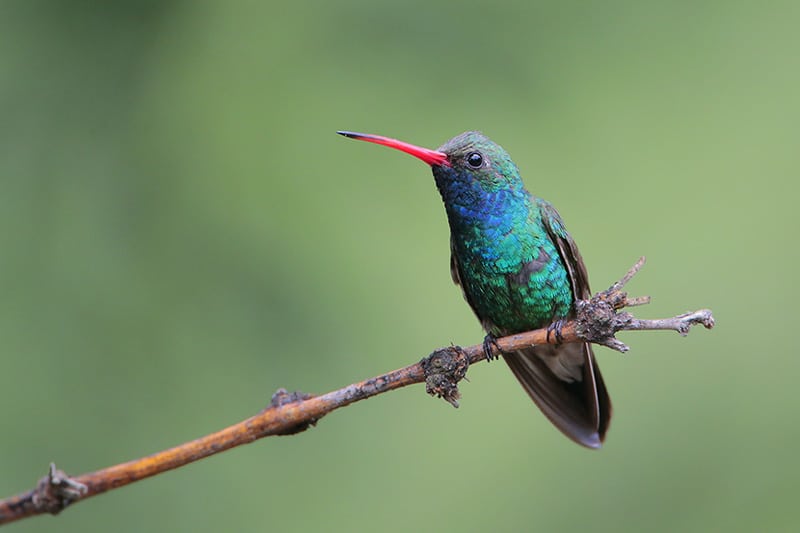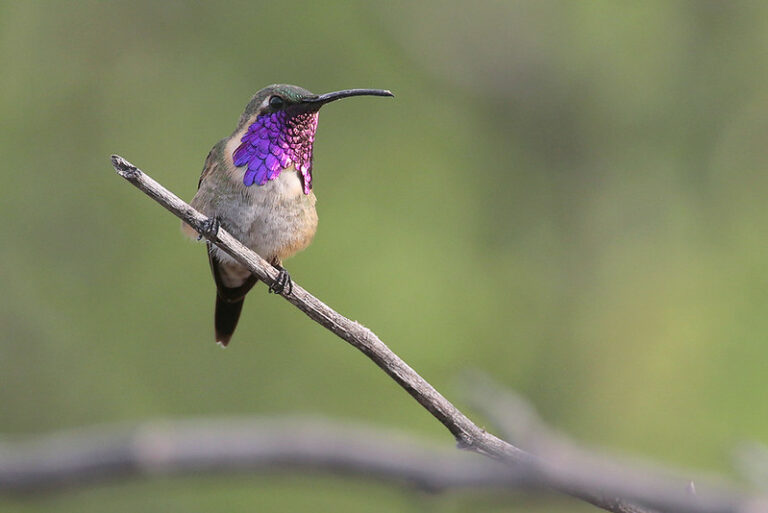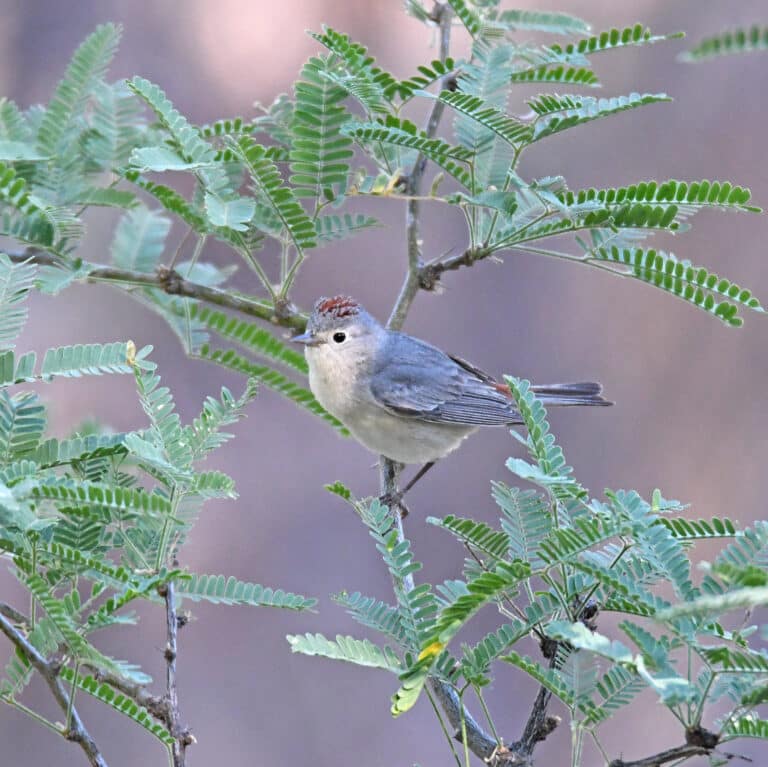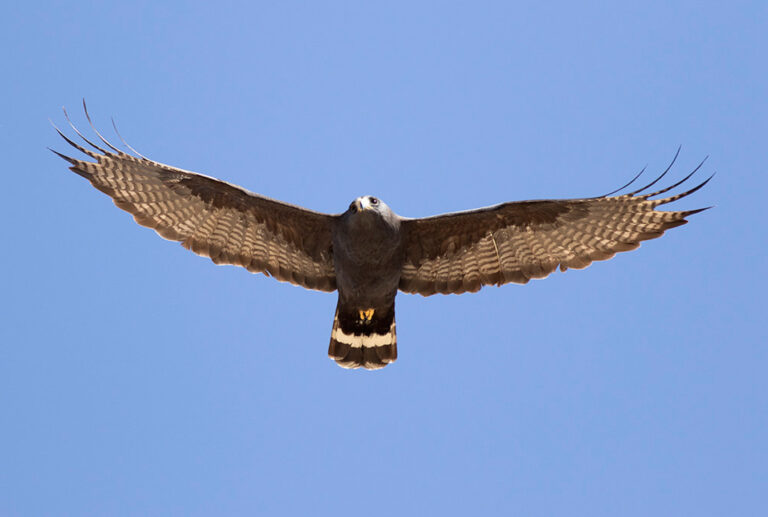Southeast Arizona is lucky to have one of the most spectacular hummingbirds in North America—one that truly is a flying jewel. The Broad-billed Hummingbird is a medium-sized hummingbird with a metallic green body, vibrant blue throat, and a bright orange-red bill with black tip. Surprisingly, its name is based on the very broad base of its bill, but it could have easily been named for one of these other more exciting and recognizable features. How about the “Cobalt Firebill” or the “Metallic Emerald?” Now those are names! Not to be left out, the female is more pale-bodied but sports a striking white eyebrow and the same orange bill. The eyebrow can be so prominent in some individuals that females are frequently mistaken for the more rare White-eared Hummingbird.
Broad-billed Hummingbird is a mostly Mexican species that just makes it into the U.S. in Southeast Arizona to breed in lush canyon bottoms and along riparian areas. Madera Canyon, the Santa Cruz River in Tubac, and Sonoita Creek in Patagonia are excellent places to seek them out. Listen for their chi dit calls that are reminiscent of a Ruby-crowned Kinglet. It was once thought that very few birds spent the winter in the U.S., but it is now apparent that more and more are and Tucson seems to be the epicenter. Lush landscaping and a concentration of other resources is proving to be an irresistible draw to some birds—I regularly see Broad-billeds at the flowering chuparosa plants in my yard during winter now. Plant a few nectar-producing plants or put up a feeder and you may soon be seeing “Firebills” in your own yard!




